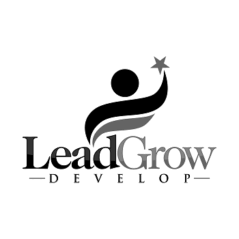One of the most crucial financial decisions you may make in life is retirement planning. Although it seems far off in the distance, acting early and often will help to create a more comfortable, safe future. Maximizing your contributions to retirement accounts is fundamental to retirement preparation. Whether your career is just beginning or you are getting close to retirement age, the choices you make today will greatly affect the kind of life you will have later. These five doable tips will enable you to maximize your retirement savings.
Take Full Advantage of Employer-Sponsored Plans
Contributing to your employer’s 401(k) or any comparable retirement plan is one of the simplest and most successful strategies for increasing your savings. Many companies provide matching contributions up to a particular percentage of your pay. Ignoring adequate security for the whole match is like leaving free money on the ground. Imagine if your company offers a matching contribution of up to five percent of your pay. However, you only manage to put away 3% of your salary. Years of compound interest might help to close that significant gap. Try to contribute at least enough to earn the whole match; if you get a raise or bonus, increase your contribution percentage. Many plans additionally have automatic escalation features that will incrementally increase your yearly contributions. Making use of these features will enable you to consistently and painlessly increase your retirement money over time.
Max Out Contributions When Possible
Try to make the maximum annual contribution to your retirement accounts if your budget lets you. The IRS lets people contribute up to $23,000 to a 401(k) for 2025, with an extra $7,500 permitted in catch-up contributions should one be age 50 or older. For IRAs, the limit is $7,000; individuals 50 years of age and over get a $1,000 catch-up.
Depending on the kind of account you are using, maxing your contributions not only increases your savings but also can reduce your taxable income. Although Roth funds provide retirees tax-free withdrawals, standard 401(k)s and IRAs offer tax-deferred growth. Selecting the correct mix of account types can also help you maximize the value of your contributions based on your tax bracket and financial situation.
Use Windfalls and Bonuses Strategically
Redirecting windfalls like tax returns, bonuses, or unanticipated cash into your retirement accounts is a clever approach to boost your contributions without compromising your everyday budget. You’re less likely to overlook this money when it’s set toward long-term objectives since it isn’t part of your usual revenue stream.
Think about simply depositing your annual bonus or some additional earnings straight into your retirement account automatically. Investing regularly over time will greatly increase even a few hundred or thousand dollars annually. This orderly strategy not only increases your savings but also strengthens sound financial practices.
Consult with a Retirement Planner
Your retirement result will be quite different if you follow professional advice. Retirement planners may assist in evaluating your present financial condition, clarifying your long-term objectives, and creating a personalized strategy to maximize your contributions. To guarantee a well-rounded retirement, a planner would also consider inflation, future medical bills, lifestyle goals, and tax preparation.
For instance, someone looking at retirement planning in Howard County, MD, may deal with a local planner who knows both Maryland-specific tax regulations and the regional cost of living. When you come closer to retirement age, a qualified advisor may suggest the best kinds of accounts to help you, when to begin withdrawals, and how to change your investment mix.
Reevaluate and Adjust Annually
Like life, your retirement contribution plan should change. Review your financial condition, income, spending, and goals every year to find out whether you can increase your contributions. Regular adjustments are also crucial to stay on track, as tax laws and contribution limitations vary year to year.
Your retirement savings, asset allocation, and general advancement toward your objectives should all be reviewed on a yearly basis. Over the years, little, deliberate adjustments taken consistently can have a major cumulative effect.
Conclusion
Maximizing your retirement contributions is about developing a sustainable, sensible strategy that suits your life and changes with your circumstances, not only about saving as much money as you can. You may lay a strong basis for the future by fully using employer-sponsored plans, contributing windfalls, connecting with a retirement planner, and yearly strategy review. Start early, be consistent, and grab control of your financial destiny; your future self will value it.

